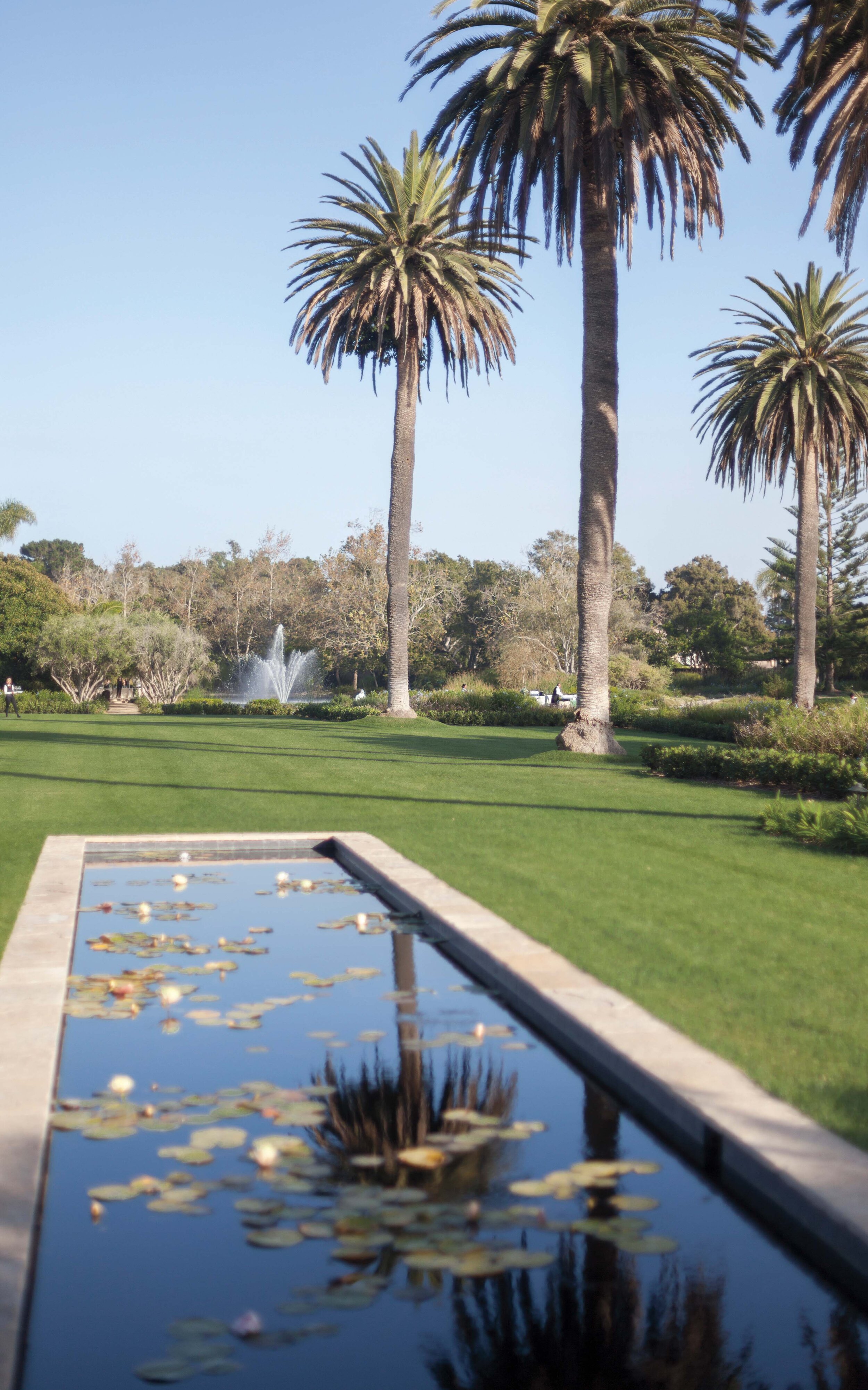Hope Renewed
Written by Joan Tapper | Photographs: Christy Gutzeit | Original Florestal Estate, Courtesy of Marc Appleton
The stories of the Florestal estate and Hope Ranch itself have been intertwined since the beginning: It was 1923 when New Yorkers Peter Cooper Bryce and his wife, Angelica, bought 52 bluff-top acres, including a mile of beach, in the new development in which he was an original partner. They hired George Washington Smith to design a Spanish Colonial-style home (constructed in 1925) that would come to be surrounded by beautiful gardens. There were lawns and Mediterranean gardens, courtyard fountains, allées of olives and magnolias, magnificent palms, even a funicular that carried beachgoers down to the sand.
Noted architect Marc Appleton, the Bryces’ grandson, grew up in Arizona, but his family would regularly make the two-day trip across the Mojave Desert to arrive “at this incredible place overlooking the Pacific Ocean. Florestal was magical,” he remembers, “and my siblings and I always looked forward to visiting and exploring it.”
After Peter Bryce died in 1964, Angelica lived at Florestal for another 16 years; then the estate was sold, passing through several owners over the next couple of decades. A few years ago, Appleton, who now lives in Montecito, got a call from longtime clients Alison and Geoff Rusack announcing that they had acquired Florestal. By this time the house “was in very bad shape,” the architect says, and “the grounds looked like a municipal golf course—all concrete paths and lawn. None of the original formal gardens were left.” Undaunted, the new patrons were “keen to restore the residence and landscape, and that is what we have achieved.”
The Original Florestal Estate
Appleton’s plan superbly blends the original design with areas that reflect more contemporary usage. Today, the grounds once again include an entry courtyard, great lawn, rose garden, and olive allée, as well as the lake and a lake pavilion, a pool, and a bocce court.
Last October, in a gesture that speaks to the special place Florestal occupies in Hope Ranch history, the estate and the neighboring Bidwell property played host to a 1930s-style garden party that benefited the nonprofit Hope Ranch Beautification Fund. Says Geri Bidwell, the proceeds go “to help restore and replenish the post-drought landscaping needs of the community” as well as the roadsides along Laguna Blanca School and other common areas of the ranch. Some 300 guests attended the wine tasting and dinner, which was highlighted by Appleton’s lively slide show and history of Florestal.
“Hope Ranch is a community with more than a century of commitment to making it a special and unique place to live,” notes Appleton, “so it’s gratifying to witness the current enthusiasm among residents.”






